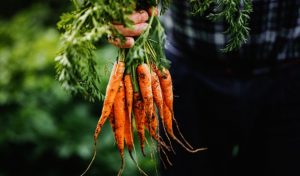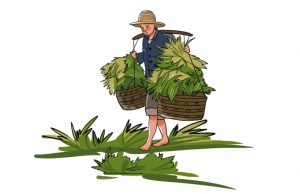Advantages and Disadvantages of Mixed Farming: Farming is basically the business of cultivating land and raising livestock. While the business of farming can be done distinctively, there can as well be a combination, and where there is, it is known as mixed farming. Mixed farming is the system of agriculture that combines arable farming with the raising of livestock.

Recommended: How to become a successful entrepreneur
Mixed Farming and Mixed Cropping or Inter Cropping
Mixed farming is different from mixed cropping, also known as intercropping. While mixed cropping is the growing of two or more different crops on the same farm land, mixed farming is a system of farming where the farmer grows crops and also rear livestock.
Intercropping is the agricultural practice of cultivating two or more crops within each other on the same land. Although with some advantages, it is particularly important not to have crops competing with each other for physical space, nutrients, water or sunlight.

Examples of intercropping strategies are; planting a deep-rooted crop with a shallow-rooted crop, planting a tall crop with a shorter crop that requires partial shade. Though the advantages includes: additional yield of income and unit area, acting as insurance against failure of crops in abnormal year, increase in soil fertility as the nutrient uptake is made from both layers of the soil, control of weeds and reduction in soil runoff, provision of shade and support to the other crop, possible increase in productivity, etc. the disadvantages extends to difficulty in the management of intercropping system, poor irrigation and higher demand of fertilizer as a result of the variety in the crop’s response to the resources, difficulty in harvesting, etc.
Farming system is a broader concept consisting of management of four primary factors of production which are land, labour, capital and enterprise, to optimize agricultural income while preserving the eco system. For the purpose of this article, we are concerned with highlighting the advantages and disadvantages of mixed farming. Having made the necessary distinction, the advantages and disadvantages of mixed farming just like most other concepts of agriculture, in one way or the other cuts across the factors of production.
Also see: Major Types of Agriculture
Advantages of Mixed Farming
1. Increase in Productivity: Mixed farming is one which crop production id combined with the rearing of livestock. The livestock enterprises are complementary to crop production; so as to provide a balance and productive system of farming. Mixed farming maintains productivity with lesser input demand.
Excretes from the livestock are used in place of fertilizer; since fertilizer is an artificial product, manure from animals are considered more enriching because it boosts productivity of farm produce without altering its natural nutrients. Also when excretes from livestock are used to cultivate crops, it saves the farmer’s money from cost of fertilizer, thereby sustaining the farmer’s income with is the general outcome of productivity.

2. Reduction in the need for Artificial Fertilizer: While manures from animals are natural, fertilizers are always artificial. Artificial produce cannot be compared to a natural one. Moreso, the cost of fertilizer which is quite expensive can be done without. In fact, cultivation with animal manure is much more encouraged as opposed to the use of artificial fertilizers which is more discouraged.
Also see: Oldest Universities In the World and Their Year of Establishment
3. Less Likelihood of Total Crop Failure: Where there is a practice of mixed farming, there is less likelihood of total crop failure. This is as a result of the incidences concerned with mixed farming, ranging from availability of manure from livestock, availability of lands for more cultivation, cost effectiveness, and from the fact that mixed farming is a multi-purpose system where cultivation of crops and rearing of animals serves as a complement unto each other, in the sense that where there are lapses or natural eco occurrence affecting the productivity of either, the other will make up for the loss.
For instance, where the crops yield lesser than was invested to the extent that it constitutes a loss, incomes from the livestock rearing can complement for the loss. It is in unfortunate cases that livestock and farm cultivation will suffer losses at the same period of time. Therefore, mixed farming system is more sustainable in agricultural practice.
4. Suppression of Pest: Mixed farming system helps reduce the infection of pest and disease on the crops. When crops and animals are haboured on the same land, animals will serve as a check to the interferences of insects, birds, rodents and other animals on the land. This is possible because livestock are not static creates like crops. Also in a mixed farming, there is more likelihood of mixed cropping or intercropping; and due to diversity of crops, pests are left struggling with locating the crop type suitable for them.
Also see: Advantages and Disadvantages of being a woman
5. Soil Fertility: In a mixed farming system, the inner soil quality increase as there is little or no use of chemicals such as fertilizer (because of availability of manure from the livestock), and pesticides, since mixed farming by its very nature has a tendency to suppress pests. In a mixed farming system therefore, there is guaranteed balance of soil nutrients.
6. Suppression of Weed: Because some livestock feed on weed, farmers have available weed to feed their livestock on from the farm. For this, farmers would have no option than to weed their farm which is entirely good for the productivity of the crops, and the weeds which are in return, not totally a waste because they serve as food to their livestock.
Recommended: Farmers and Doctors, Who is more important in the society? Answered
Disadvantages of Mixed Farming
1. Possible Limitation on Capacity of Productivity: This is mostly so for farmers having a small farmland. When the land is inadequate due to lack of space, practicing mixed farming may become less suitable because, inasmuch as the produces would be rich, the production capacity will be greatly affected.

2. Crops and Animals on the same Land: In a mixed farming system, animals may interfere with the crops as they are growing. Animals can feed on them and stampede them. this can still happen even when the animals are restricted, because they can always detach from their restricted zone whenever they find their way.
Recommended: Nine (9) Reasons For Delegated Legislation
3. No Shifting Cultivation: In a mixed farming system, there is less likelihood for the practice of shifting cultivation, especially where the lands are fewer in space. Shifting cultivation is encouraged because it helps the soil to regain its full nutrient then the tilling and cultivation of a particular land is suspended for an interval of few years. In a mixed farming, the practice is less practicable especially if the mixed farming land practice was motivated by unavailability of space. And when shifting cultivation is not practiced, it leads to exhaustion of soil nutrient.
4. No Use of Machines: In a mixed farming system, there is most likelihood of intercropping. Due to the disparity of crops, machineries cannot be used. This is because, by their disparities, their period of production and yielding differs. Also, the use of machineries in a mixed farming system would cause some effect on the animals resulting from the emission of gases from the machineries. Also, machineries can have effect on certain delicate crops.
Also see: Types of Constitution: 6 Different Types of Constitution
Conclusion
Mixed farming is a notoriously practiced form of farming. It involves both cropping and livestock rearing. Mixed farming is essentially associated with highly urbanized areas, although most suitable but not always the case. The system of mixed farming yields high profitable returns and is considered an efficient method of farming.

Edeh Samuel Chukwuemeka, ACMC, is a lawyer and a certified mediator/conciliator in Nigeria. He is also a developer with knowledge in various programming languages. Samuel is determined to leverage his skills in technology, SEO, and legal practice to revolutionize the legal profession worldwide by creating web and mobile applications that simplify legal research. Sam is also passionate about educating and providing valuable information to people.

So good
It’s useful
Wow
So great